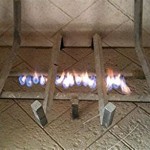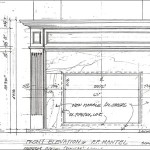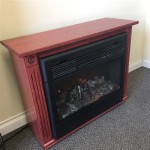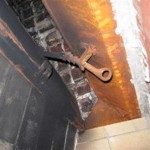Russian Fireplace Design: A Historical and Practical Perspective
Russian fireplace design, often referred to as a "Russian stove," occupies a unique position in architectural history. These structures, typically built with brick or stone, are not solely for decorative purposes like their Western counterparts. They represent a long-standing tradition intertwined with the harsh realities of Russian winters and the cultural practices of the people. This article explores the key features of Russian fireplace design, delving into its historical significance, construction techniques, and functional considerations.
Origins and Evolution
The origins of the Russian stove can be traced back to the Slavic tribes of Eastern Europe centuries ago. These early stoves were primarily used for cooking and heating, often serving as a central gathering point within the home. Over time, they evolved into elaborate structures, becoming an integral part of Russian domestic architecture. The development of the Russian stove was closely tied to the availability of materials and the evolving needs of the people. In regions with abundant forests, wood became the primary fuel source, leading to the design of stoves with large fireboxes to accommodate fuel logs.
The classic Russian stove, known as a "pech," emerged during the 17th and 18th centuries. This period saw the introduction of more sophisticated designs, incorporating features like a built-in oven for baking bread, a platform for sleeping, and a warming bench. The intricate design of the stove's interior, often featuring multiple chambers and flues, was crucial for maximizing heat efficiency and ensuring even heat distribution throughout the dwelling. The stove's exterior was often embellished with intricate brickwork, reflecting the craftsmanship of the builders and the aesthetic preferences of the time.
Construction Techniques and Materials
The construction of a Russian stove is a complex and laborious process, requiring the skills of experienced artisans. The primary materials used are brick and stone, often sourced locally. The foundation, typically made of solid stone, is laid first, followed by the firebox and chimney. The stove's body is built using specially shaped bricks, often arranged in complex patterns to create a strong and durable structure. The walls are carefully insulated with layers of clay, straw, and sand to prevent heat loss and ensure even heat distribution.
The most distinct characteristic of the Russian stove is its large, curved belly. This design feature serves as a heat accumulator, allowing the stove to store and release warmth for extended periods. The stove's flue system is also crucial for its efficiency. It is typically built with a series of twists and turns, designed to slow down the flow of hot gases and maximize heat transfer.
Functionality and Cultural Significance
Beyond its heating capabilities, the Russian stove served as a multi-functional element within the home. Its built-in oven was used for baking bread, cooking meals, and preserving food. The stove's platform, often covered with a thick layer of straw or hay, provided a warm and comfortable place to sleep during the long winter months. The warming bench provided a spot for people to gather and socialize, particularly during the colder months.
The Russian stove was not simply a heating appliance; it embodied a vital aspect of Russian culture. It was a symbol of hearth and home, a place where families gathered for meals and shared stories. The process of heating the stove each morning was a ritualistic act, a way of connecting with the natural cycles of the day. The stove's warmth was associated with comfort, security, and family tradition, making it an indispensable part of Russian life.
The influence of the Russian stove extends beyond its traditional function. Its design principles inspired modern heating technologies, including the development of radiant heating systems. The stove's unique aesthetic has also been incorporated into contemporary interior design trends, adding a touch of historical charm to modern homes. The Russian stove continues to be a testament to the ingenuity and cultural heritage of the Russian people, offering a glimpse into their enduring connection with fire and home.

Masonry Stoves Heaters And Fireplaces Also Known As The Russian Fireplace Plus Ovens Ea Rocket
Brick Masonry Fireplaces Part 1 Russian Style Heaters

Masonry Heaters Better Than Traditional Fireplaces Tulikivi

Basic Structure Of A Russian Stove Home Furnace Rocket Stoves

Pin By Tania On For The Home Cob House Design Earthship

Masonry Heaters

Russian Tiled Stoves
Brick Masonry Fireplaces Part 1 Russian Style Heaters

Masonry Heaters Burn Hot And Clean Greenbuildingadvisor

Masonry Heaters Better Than Traditional Fireplaces Tulikivi
Related Posts








